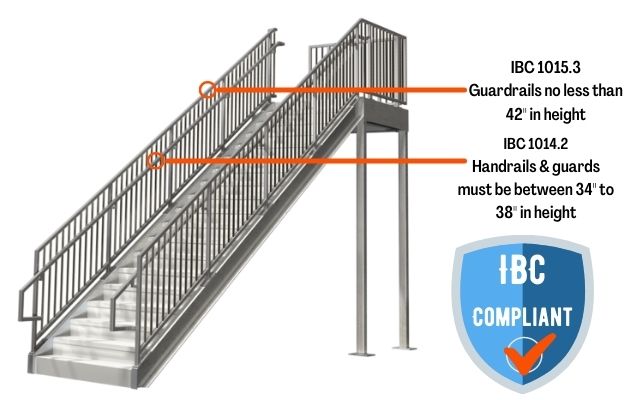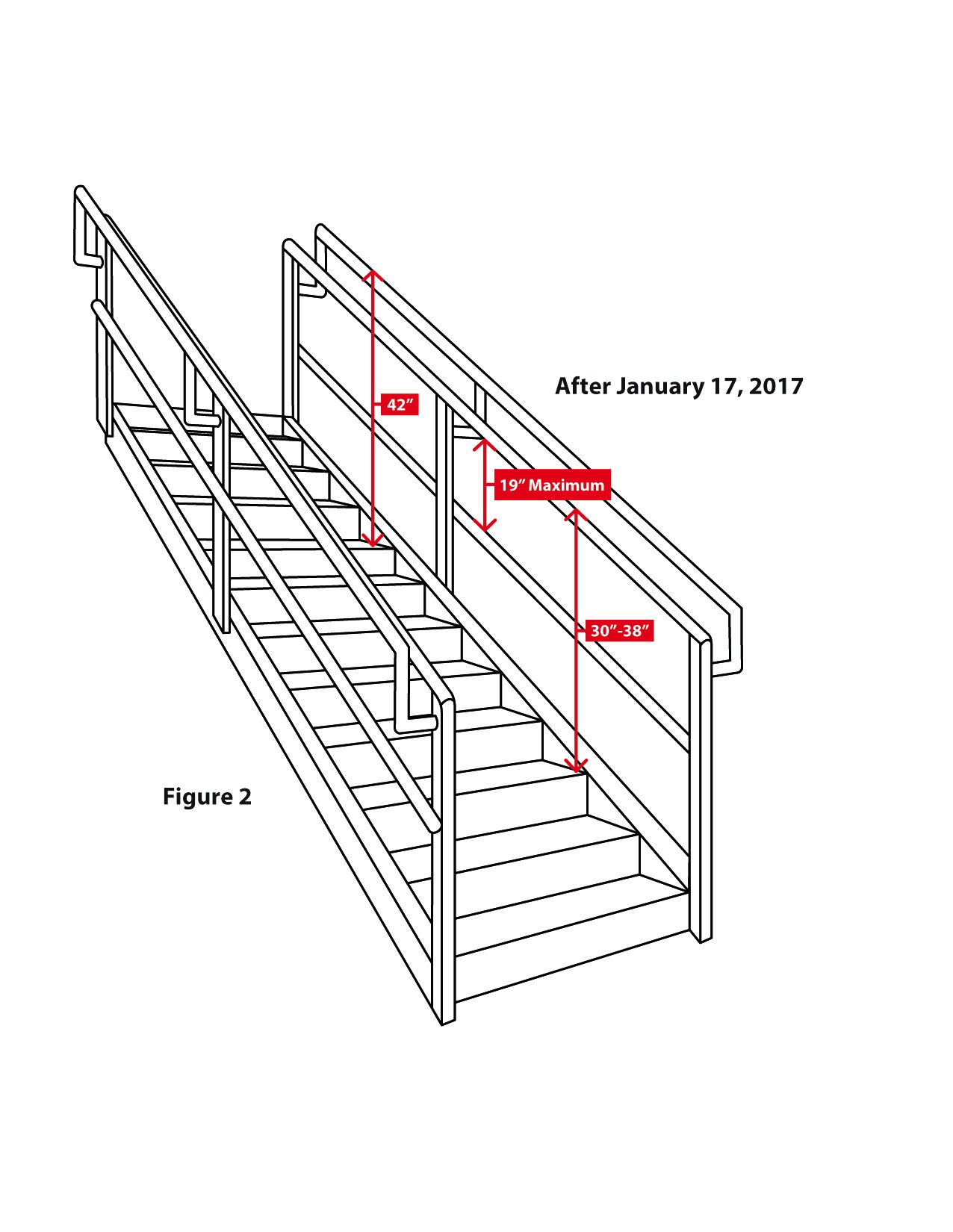
The stair nosing is the portion of the tread that sticks out beyond the riser. The maximum vertical rise of stairs according to the IRC shall be 151″ or about 12.5-feet. Vertical rise is the total height of the stairs as measured between floors or landings. This rule also applies to landings as measured from any area on the landing to the ceiling. It is measured from the imaginary diagonal slope atop the stair risers or nosings. The minimum headroom as measured from the stairs to the top should be at minimum 6-ft and 8-in. The stairs to the basement had a ceiling protrusion that was probably around 5 feet and I repeatedly hit my head on the top. I recently did a home inspection on an old home with numerous additions.
#Stair rail code height code
This rule will more likely be an issue on older homes that I inspect, and they are usually grandfathered into existing code due to age. Basically, this rule helps prevent people banging their head when using the stairs.

Headroom is the space required from the stairs to the ceiling. If there are handrails on both sides, then the minimum width of the rails should be at least 27-inches below the handrails. The minimum stair width above the handrail and below the ceiling shouldn’t be less than 36 inches.īelow the handrail, the minimum width should be at least 31.5 inches if there is one handrail. Read Also: 7 Things That Fail A Home Inspection Basically, if there are no risers, then a child’s head shouldn’t be able to pass through above than 30″ point from the ground. If the stairs has open risers, then anywhere above 30″ from the floor should not permit a sphere of 4-inch diameter to pass through.

There shouldn’t be a height difference of more than 3/8″ between the tallest and shortest riser. Riser height should have a maximum height of 7-3/4 inch height (4-inch minimum). The longest tread versus the shortest tread shouldn’t be more than 3/8-inch. The treads (horizontal portions) of a stairs should be at minimum 10-inches long. Nevertheless, I have compiled the seven most important stair code requirements with some helpful pictures below: 1. Note: Stairs cannot be more than 12' high without landings, (19 treads) R311.7.Staircase code for residential homes can get pretty complex, and there are numerous exceptions within the IRC handbook as well as state code that can take priority. Openings shall not allow passage of a sphere 4" in diameter. R312 Guards on Decks: Decks with over 30" rise above the adjacent floor or ground must have a guardrail at least 36" high measured vertically above the deck or fixed seating. Open risers are permitted by code with a catch because they may not be large enough to permit the passage of a 4" sphere. Required guards shall have balusters or other members arranged so that a 4 3/8" sphere cannot pass through them, except that a triangular opening formed by the guard, tread, and riser can be such that a 6" sphere cannot pass through it. R312 Guards on Stairs: Open sides of stairs with over 30" rise above the adjacent floor or ground must have a guardrail at least 34" high measured vertically from a line connecting the leading edge of the stair treads.

Note: A 2x4 does not meet handrail cross section requirements. Handrails must extend from the top to bottom riser. Rails with a perimeter greater than 6.25" must have a finger grip routed in both sides. Other shapes with a perimeter dimension between 4" and 6.25" with no cross sectional dimension greater than 2 1/4" are acceptable. Circular handrails must be between 1.25" and 2" in diameter. R311.7.7 Handrails: Stairs with 4 or more risers must have a handrail located above all portions of the treads, between 34" and 38" above the tread nosing, continuous between floors, with ends terminating at wall or newel post so as not to snag clothing. This means you will have to plan ahead to make sure every one of your stairs measurements are the same. The tread width and riser height shall not exceed the smallest by more than 3/8". The minimum stair tread depth measured from nosing (also the stringer rough cut) is no less than 10". The maximum riser height is 7-3/4" and the minimum riser is 4".

R311.7 Stairways: The minimum width for stairs is 36". Deck Stair Code Information from IRC 2009


 0 kommentar(er)
0 kommentar(er)
